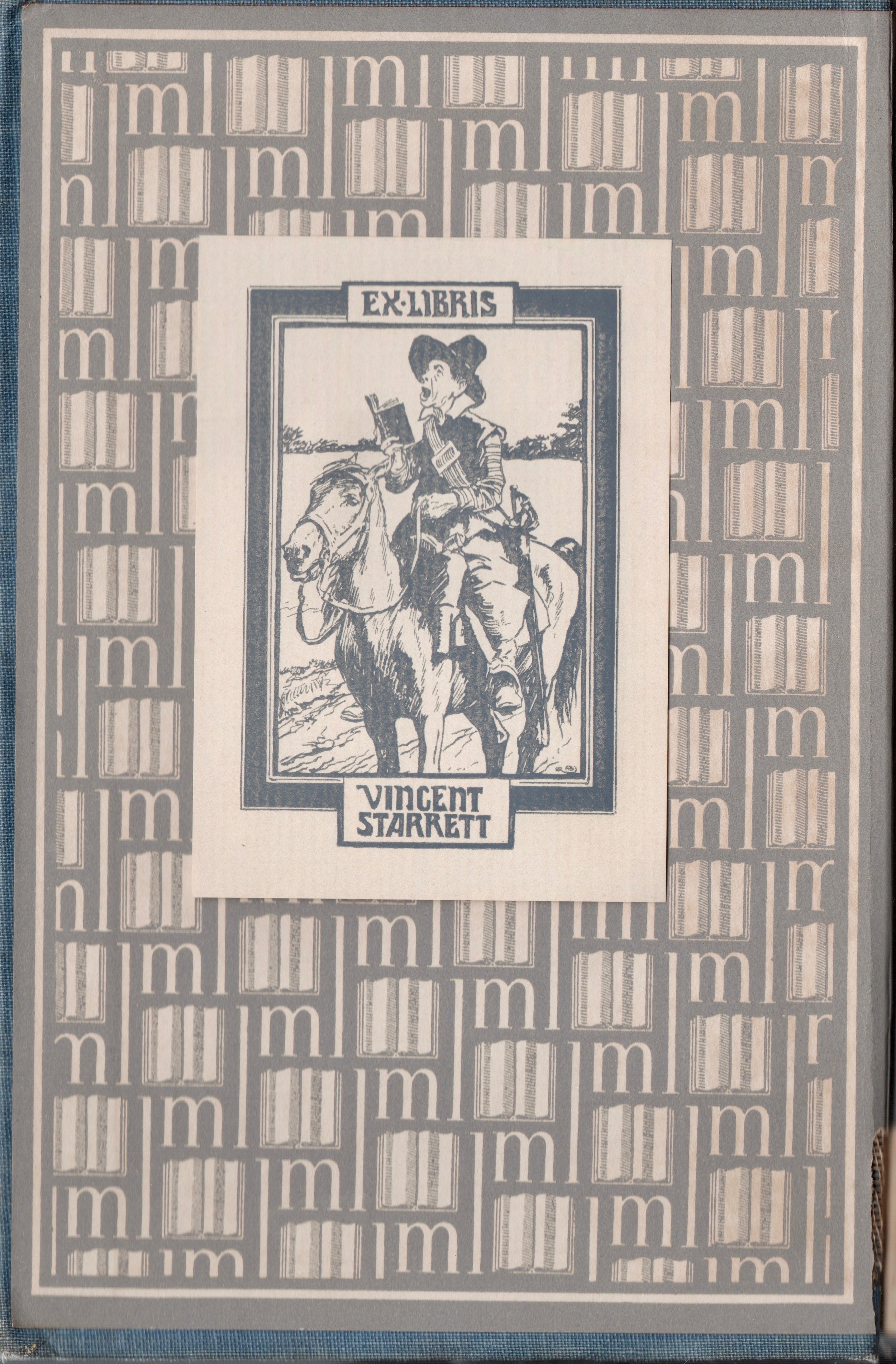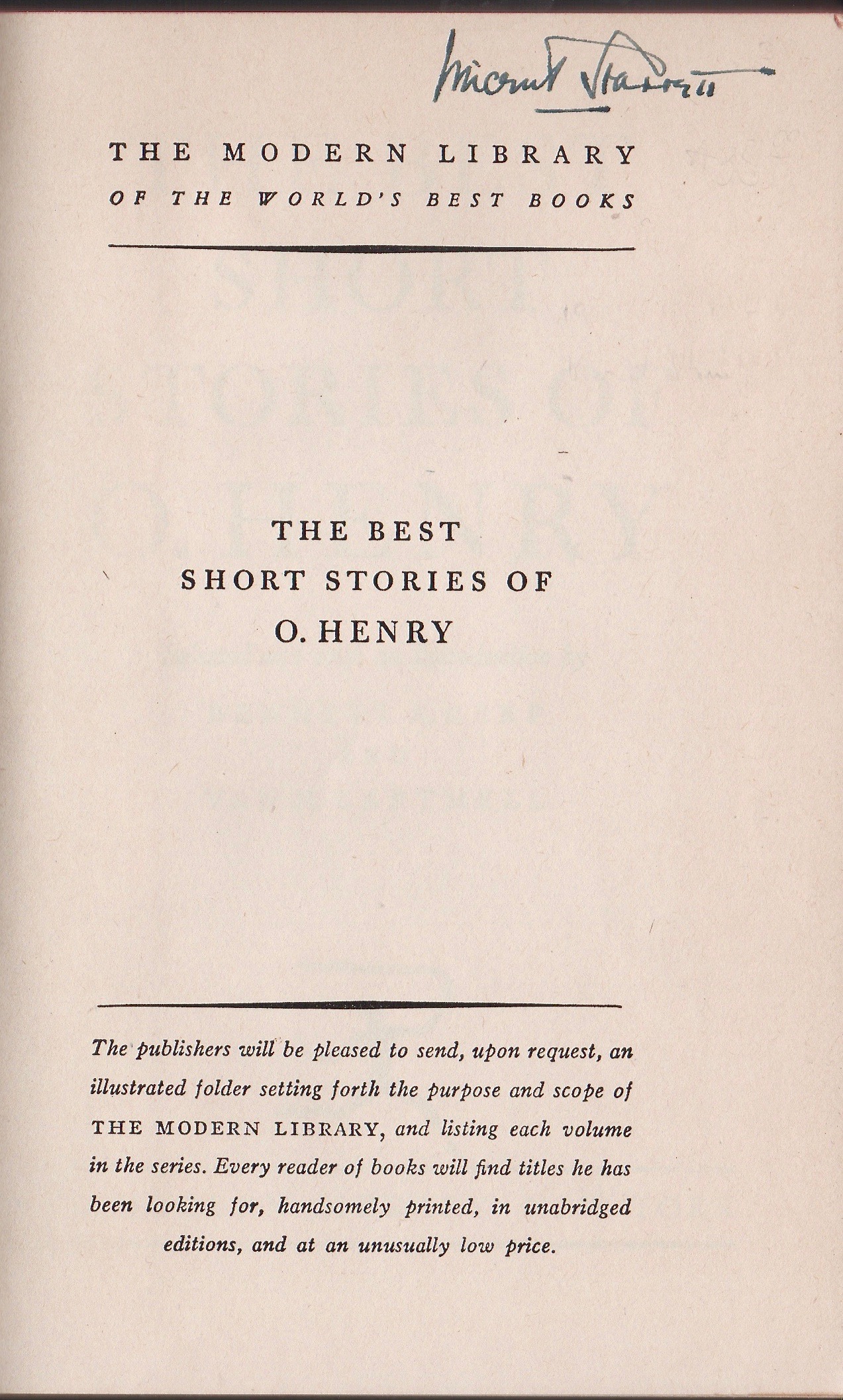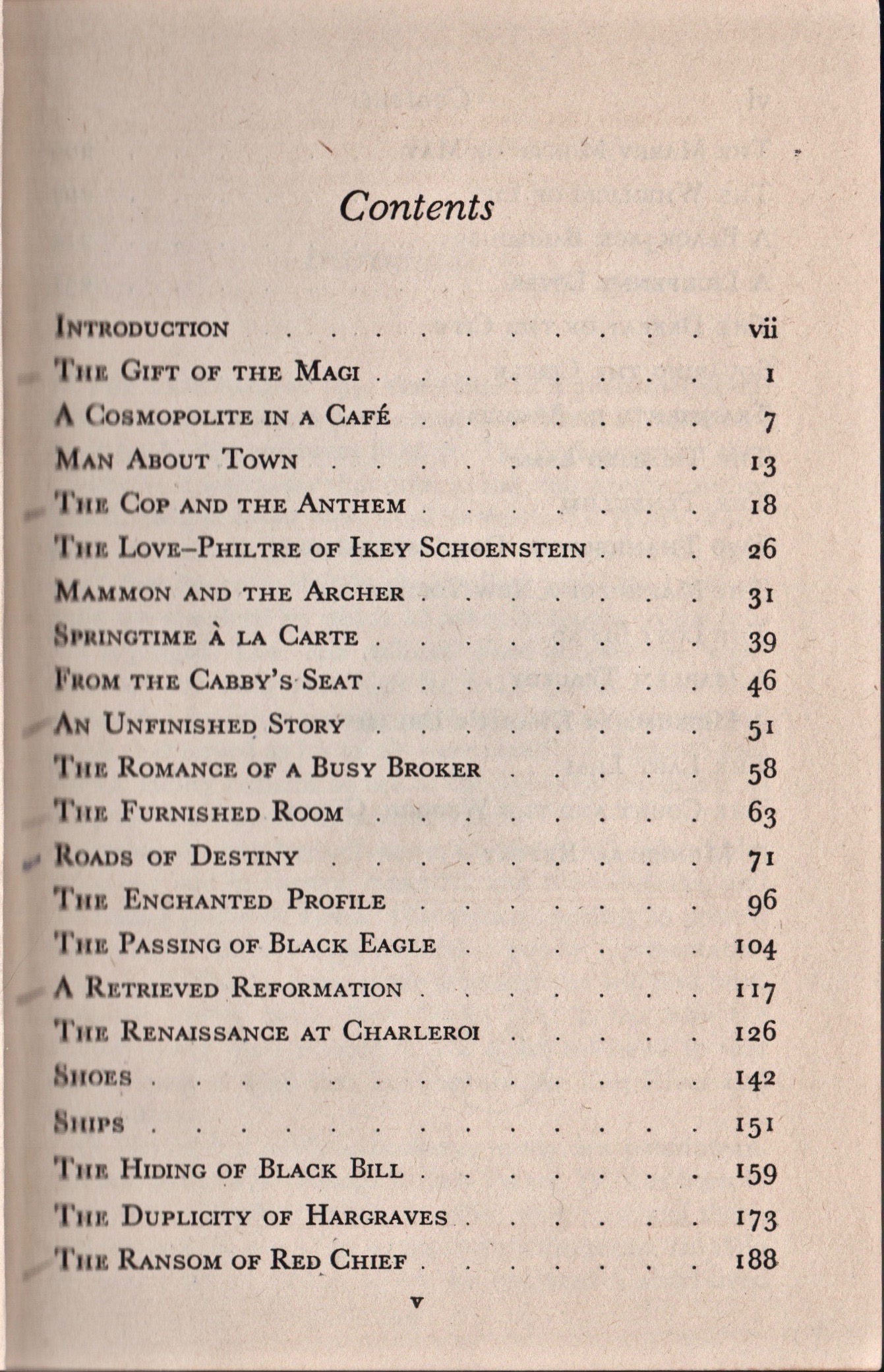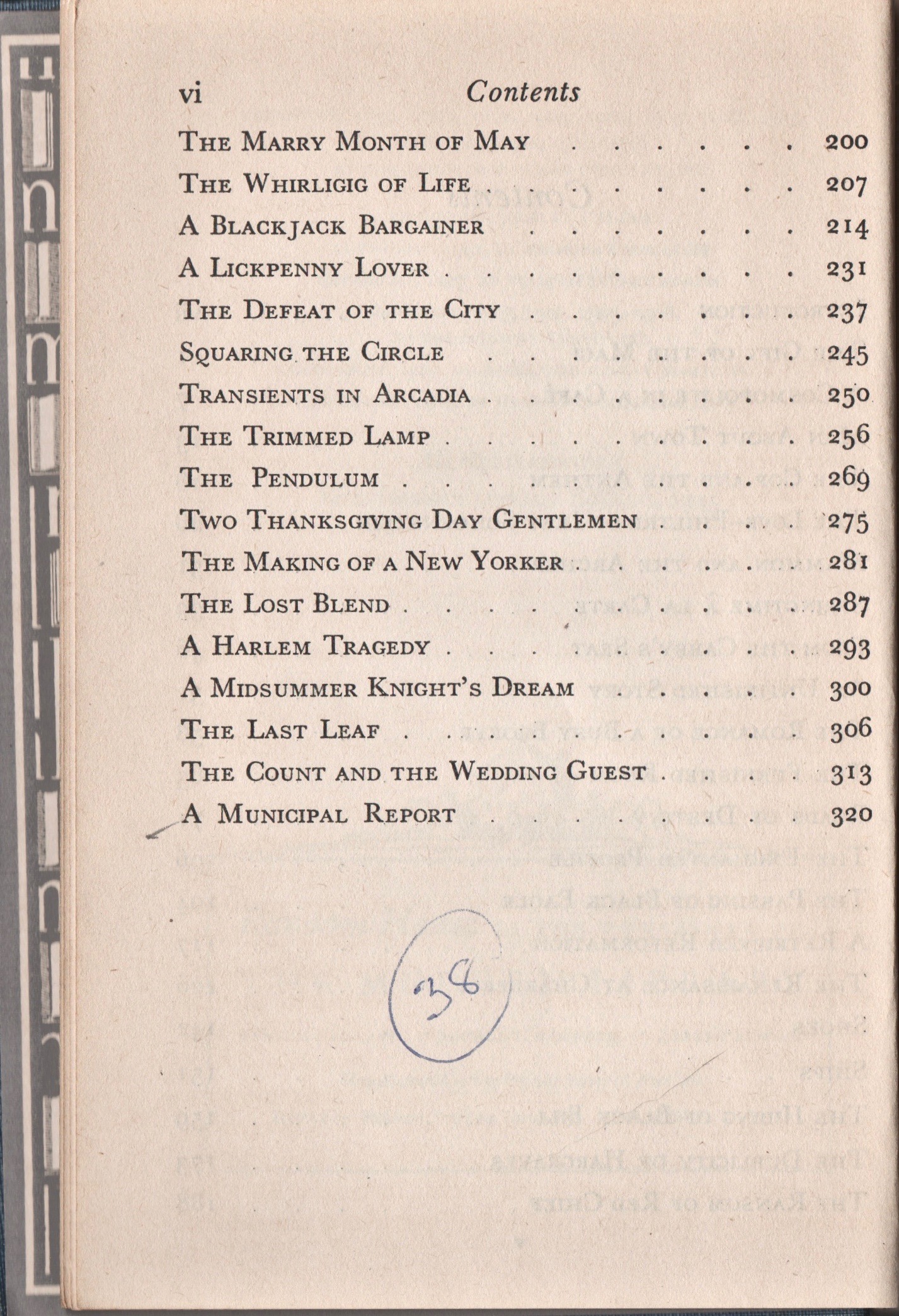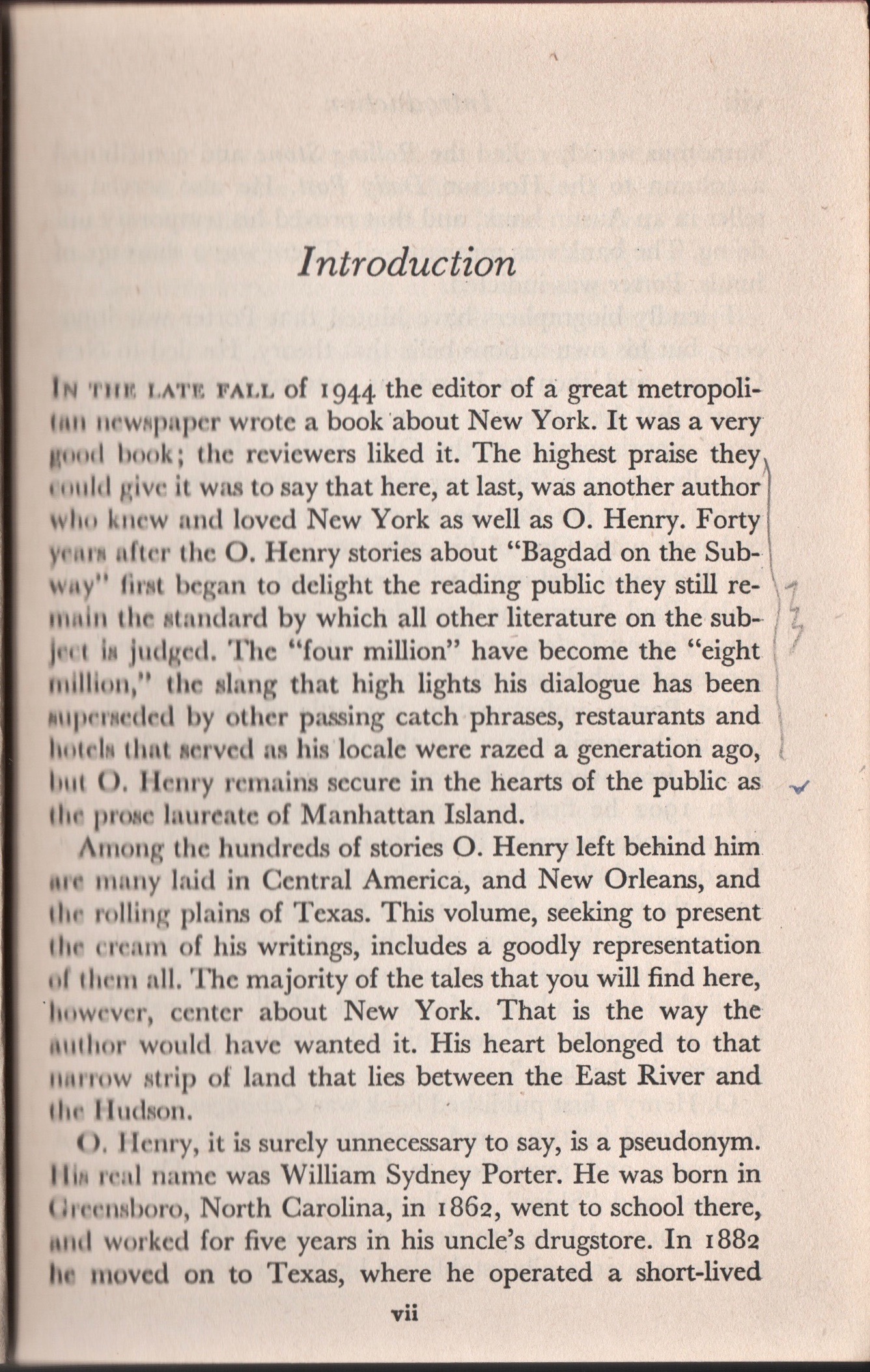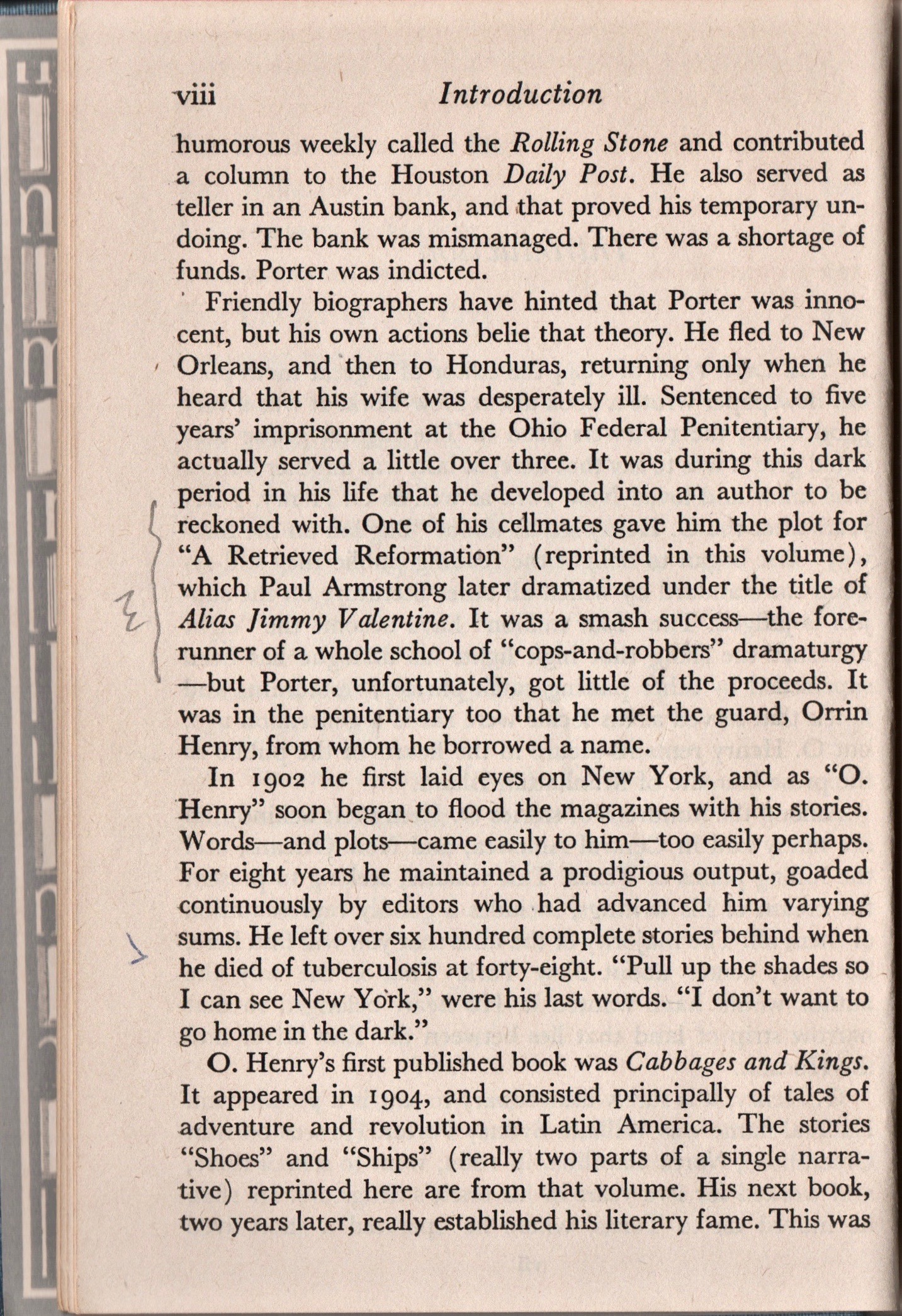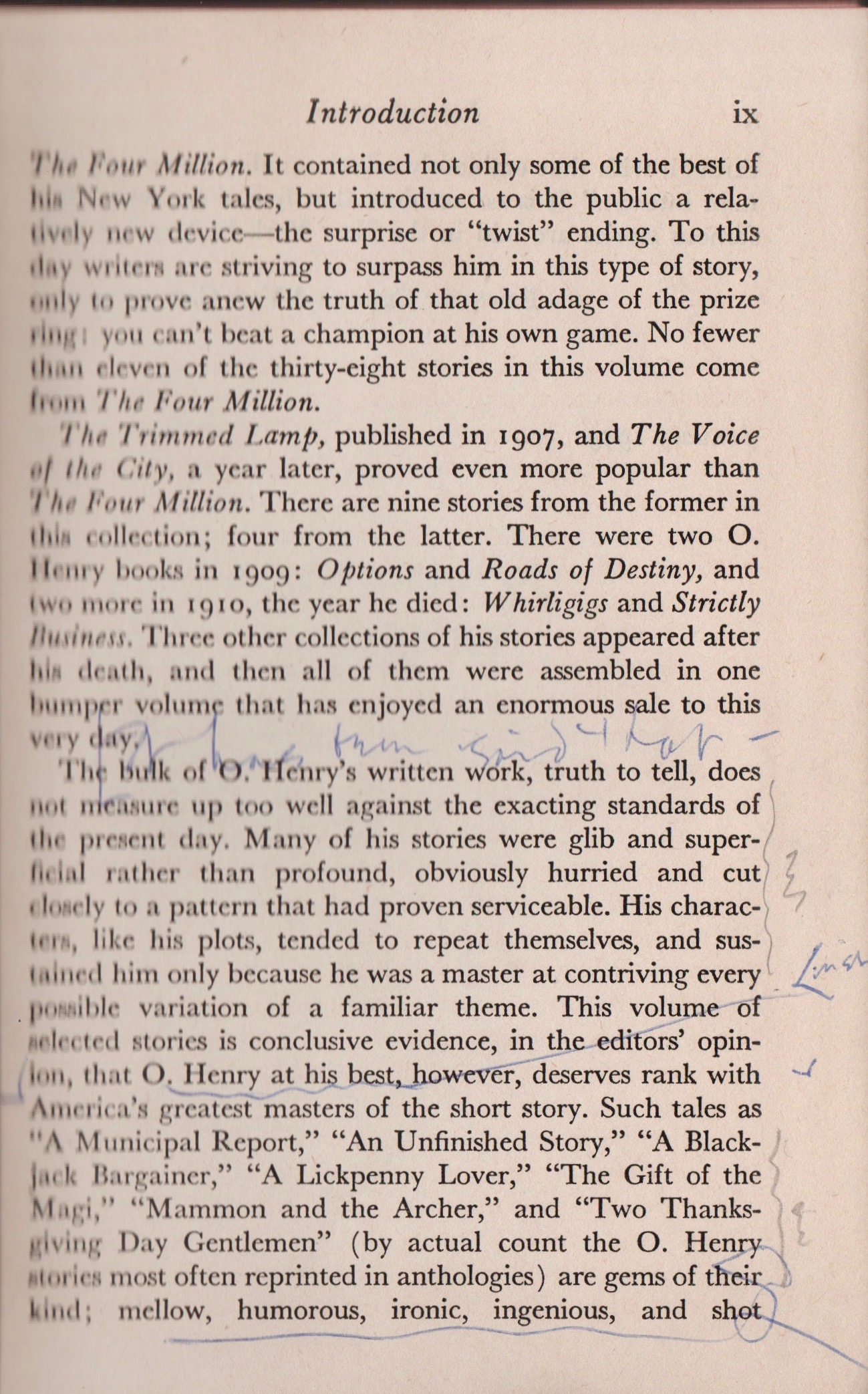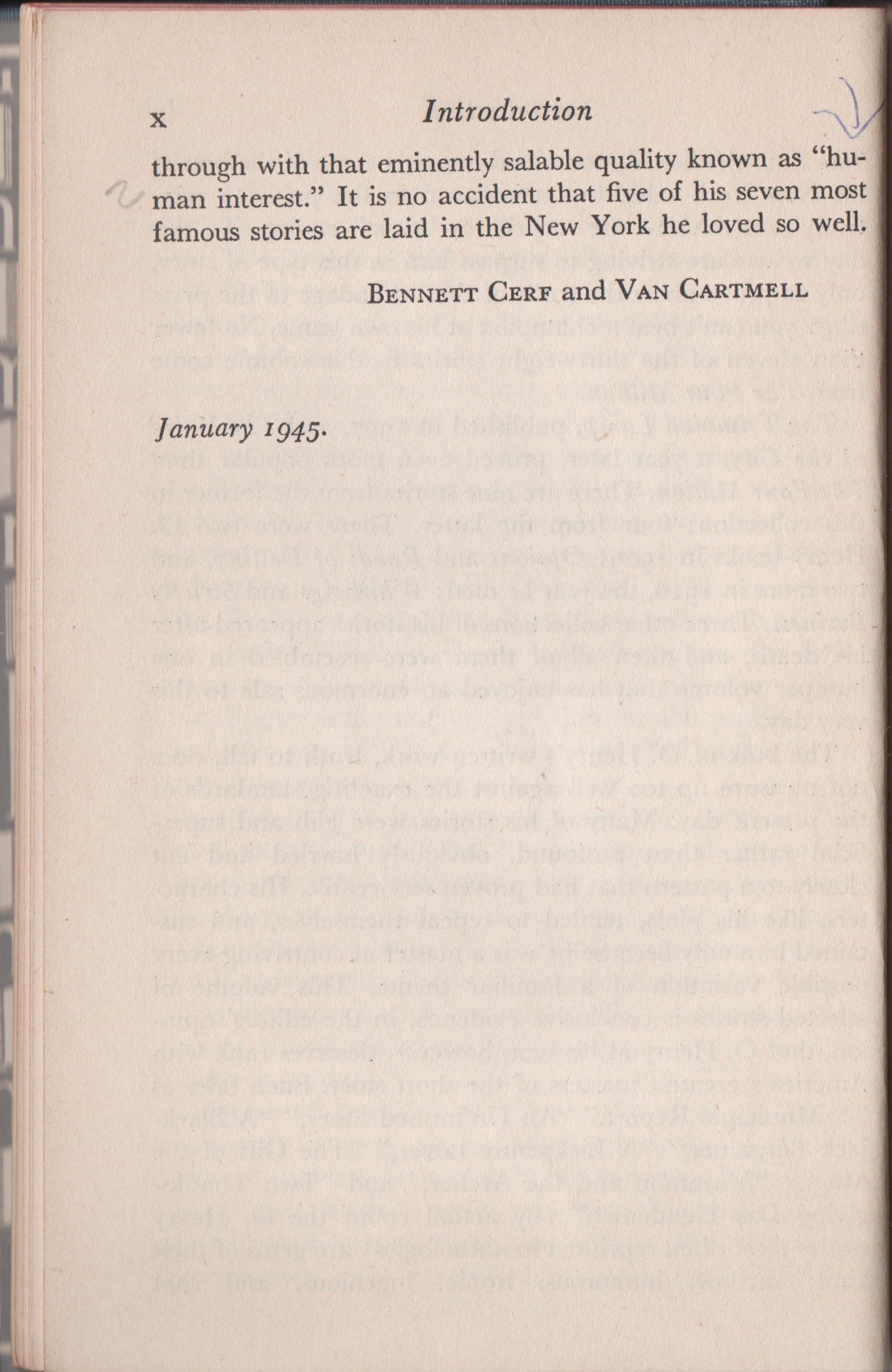Standing over his shoulder
Glimpse Starrett at work.
Peak inside this copy of O.Henry shorts stories and we'll watch Vincent Starrett at work.
Not long ago I picked up a pretty ordinary looking book. The Best Short Stories of O.Henry is fun reading, especially for those stories set in New York. The book was edited by Bennett Cerf and Van H. Cartmell, who also provide a nice introduction to the life of William Sydney Porter, who used the pen name O.Henry. (I had forgotten that Porter spent some time in jail for bank fraud. One of his guards at the Ohio State Penitentiary was Orrin Henry. An alias was born.)
(And since I'm in parenthetical land, let me offer one more note: One of the grand places Sherlockains have been known to haunt during their annual trek to New York is Pete's Tavern near Gramercy Park. Old friends Ely Liebow, Don Yates, David Morrill, Mike Kean and I would huddle around a table in their dining room and consume beverages while exchanging news and gossip in days long gone by. Pete's has retained its old world flair and, if you like, you can drop yourself in the corner window table which, according to legend, was much favored by O.Henry.)
But I digress.
The Book
Opening the book, which has a weak hinge, we are greeted by one of Vincent Starrett's bookplates. I've come to think of it as his "singing Pilgrim" plate. I still have no idea what the inspiration was for the design, but I continue the hunt for clarity.
Flip one page and there's Starrett's signature in the upper right corner.
The book was published in 1945 by the Modern Library. How Cerf came to run Random House and Modern Library is a tale worth reading, and you could do worse than start here. It's been many years since I read his memoir, At Random: The Reminiscences of Bennett Cerf, but I recall it with good humor.
(Growing up a TV addict in the late 50s and early 60s I recall seeing Cerf on the game show "What's My Line." He seemed impossibly clever and I envied his ability to make people laugh so easily. I also like his bow ties. It is entirely possible I associated the two as a child and continue to do so today.)
(I seem to be slipping into parentheticals a lot today. This is last one. Promise.)
As I said, the book was published in 1945 and no doubt a copy made its way to Chicago where Vincent Starrett's column, "Books Alive," was the leading place for bibliophilic gossip. While I can't be sure, it's likely this was the review copy that landed on Starrett's desk.
Let's look over his shoulder and watch him at work.
The Research
First, the table of contents.
And here we have a difficulty. See those little check marks? They're made in pencil. I've seen a few times where Starrett used pencil, but he more often did authorial battle with a fountain pen or, much later, an ballpoint pen. Pencil marks are seen, but not often.
For now, I'm going to say it was Starrett who made those marks.
Pencil or pen, it's unclear what the marks represent.
Most, but not all, of the eight stories selected take place in New York. That could be the commonality. But at least a few of the unchecked stories seem to be based in New York too. O.Henry was sometimes unclear.
Maybe those stories with the check marks were the ones Starrett had already known and enjoyed?
Certainly each has the familiar O.Henry twist or flip at the end. But then, that's equally true for many of those not checked off.
While there are mysteries, there is one especially telling bit here. Take a look at the second page of contents. See that circle in the bottom, with the number 38 in it?
Remember that. We'll be back to it in a moment.
Now we come to the introduction by Cerf and Cartmell.
First, flip through the four pages that make up the introduction and notice the many marks on them.
Once again, the pencil shows up. But this time, there are also pen marks, and regardless of the kind of writing stick used, the style is the same.
There is even one scribbled line of text on page ix. I'm not exactly sure what it says, but after squinting at it for a while, I'm reading it as, "It has been said that." (OK, one more parenthetical thought: I thought his note said something different, but careful fans at Studies in Starrett have convinced me this reading is correct.) What sentiment was he pointing out?
"The bulk of O.Henry's written work, truth to tell, does not measure up too well against the exacting standards of the present day."
Keep that remark in mind too.
There are other ink marks in the book near the story text, but they are very small and at first I thought they were the result of careless printing. But then I noticed some are clearly exclamation marks, and they seemed to highlight a phrase that Starrett particularly enjoyed. Here's one example. Remember, Starrett was a poet and this has a distinctive poetic feel.
"The road lay curling around the wood and dale and tree like a ribbon lost from the robe of careless summer."
A poet's observation for certain.
The Result
One more image before we're done.
We have to jump from the book to the pages of the Chicago Tribune of Sunday, June 17, 1945. There, on Page 82 is Starrett's column, "Books Alive." Midway through there is this set of observations.
Starrett's commentary on Cerf and Cartmell's book, The Best Short Stories of O.Henry.
And there you see the results of the scribble.
- The number 38 in the circle at the bottom of the contents page is noted halfway through the second paragraph of "Books Alive."
- Starrett's excited marks about the relative value of O.Henry's stories is quoted here, leading the second graph, "The bulk of O.Henry's written work, truth to tell, does not measure up too well against the exacting standards of the present day."
- There is also a tic mark on page viii against the number 600, the total number of O.Henry short stories. Starrett uses that number in his column too.
It seems to me this is the book Starrett had at his side while writing this column. That's a pleasant thought indeed.
We'll never get to see Starrett at work, but this is probably as close as we'll get.

